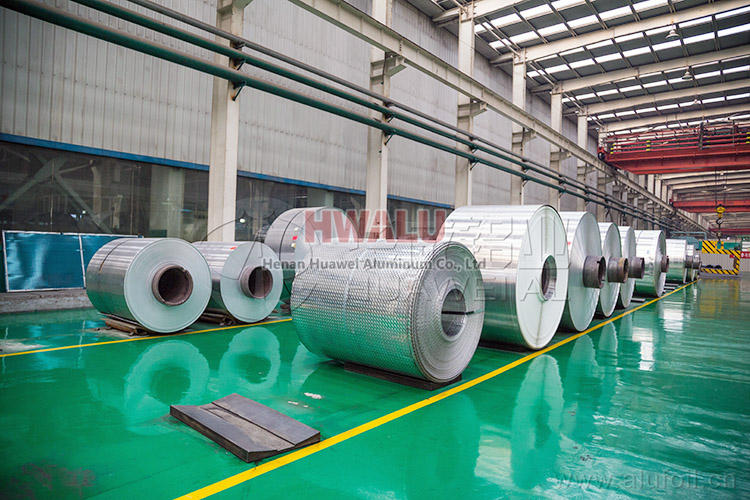(1) Mangan: Mangan jest głównym pierwiastkiem stopowym w 3000 seria aluminiowa, a jego zawartość jest na ogół w zakresie 1% Do 1.6%. Stop ma dobrą wytrzymałość, plastyczność i wydajność procesu. Mangan i aluminium mogą tworzyć MnAl 6 faza. Wytrzymałość stopu wzrasta wraz ze wzrostem zawartości manganu. kiedy ω(Mn)>1.6%, the strength of the alloy increases. Jednakże, due to the formation of a large amount of brittle compound MnAl 6 alloy is prone to cracking when deformed. As ω(Mn) increases, the recrystallization temperature of the alloy increases accordingly. Due to the large supercooling ability of this series of alloys, large intragranular segregation occurs during rapid cooling and crystallization. The concentration of manganese is low in the dendrite part and high in the edge part. When the cold processed product has obvious manganese In the case of segregation, coarse crystal grains are easily formed after annealing.
(2) Żelazo: Iron can be dissolved in MnAl6 to form (FeMn)Glin 6 compounds, thereby reducing the solubility of manganese in aluminum. Add ω(Fe)=0.4%~0.7% to the alloy, but ensure that ω(Fe+Mn)≤1.85% can effectively refine the grains of the annealed sheet, W przeciwnym razie, a large number of coarse flakes (FeMn ) Glin 6 compound will significantly reduce the mechanical properties and process performance of the alloy.

(3) Krzem: Krzem jest szkodliwym zanieczyszczeniem. Silicon and manganese form a complex ternary phase T (Glin 12 Mn 3 I 2 ), which can also dissolve iron to form a (Glin, Fe, Mn, I) quaternary phase. If iron and silicon coexist in the alloy, A (Glin 12 Fe 3 I 2) or β (Glin 9 Fe 2 I 2) phase will be formed first, destroying the beneficial effects of iron. Dlatego, Oh(I)<0.6% in the alloy should be controlled. Silicon can also reduce the solubility of manganese in aluminum and has a greater effect than iron. Iron and silicon can accelerate the decomposition process of manganese from supersaturated solid solution during thermal deformation, and can also improve some mechanical properties.
(4) Magnez: A small amount of magnesium (Oh(Mg)≈0.3%) can significantly refine the annealed grains of the alloy and slightly increase its tensile strength. But at the same time it will also damage the surface gloss of the annealed material. Magnesium can also be an alloying element in Al-Mg alloys. Adding ω(Mg)=0.3%~1.3% will increase the strength of the alloy and decrease the elongation (annealed state). Dlatego, Al-Mg-Mn alloys have been developed.
(5) Miedź: kiedy ω(Cu)=0.05%~0.5% in the alloy, its tensile strength can be significantly improved. But containing a small amount of copper (Oh(Cu)=0.1%) will reduce the corrosion resistance of the alloy, więc ω(Cu)<0.2% in the alloy should be controlled.
(6) Cynk: kiedy ω(zn)<0.5%, it has no obvious effect on the mechanical properties and corrosion resistance of the alloy. Considering the welding performance of the alloy, the limit ω(zn)<0.2%.
